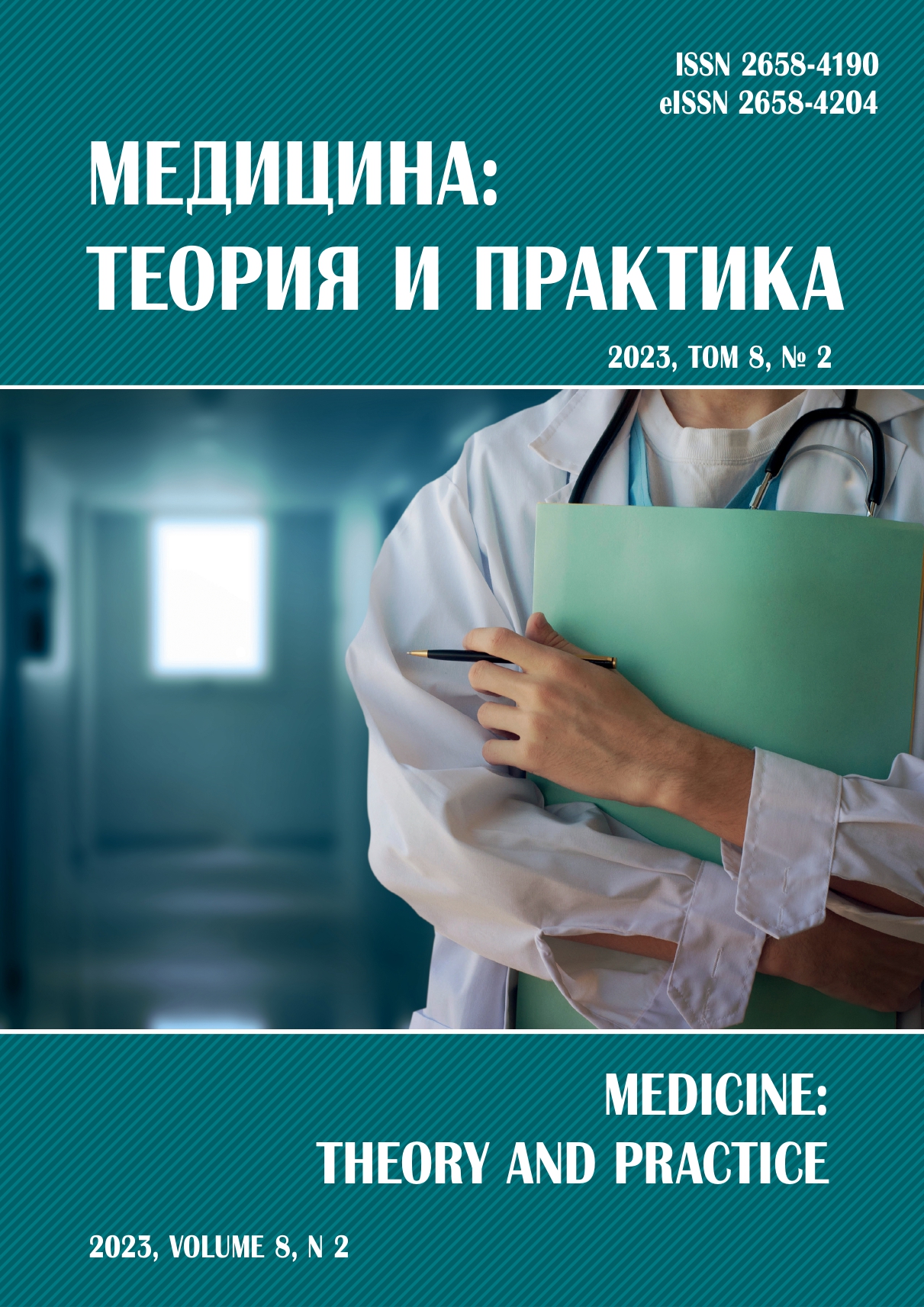PREDICTORS OF METABOLIC SYNDROME DEVELOPMENT RISK IN YOUNG MEN WITH ABDOMINAL OBESITY
Abstract
Background. The problem of studying risk factors for the development of metabolic syndrome in young men of military age is of particular relevance against the background of the global epidemic of obesity. Aims. To determine the frequency of detection of the metabolic syndrome and to study the predictors of its development in young men aged 18‒21 years with abdominal obesity. Materials and methods. We examined 221 males aged 18−21 years with abdominal obesity (mean age 19.4 ± 1.2 years). Results. In the group of boys with abdominal obesity of the 3rd degree, the metabolic syndrome occurred more often than in the 2nd degree (respectively: 77.5 % and 59.3 %; χ2 = 7.44; p = 0.0064) and in the 1st degree of abdominal obesity (77.5 % and 3.9 %; χ2 = 113.2; p = 0.0000). Strong correlations were found between the number of metabolic syndrome components and the level of systolic blood pressure (r = 0.85; p < 0.05) and diastolic blood pressure (r = 0.71; p < 0.05), the level of highly sensitive C-reactive protein (r = 0.83; p < 0.05). An average correlation was found between the number of metabolic syndrome components and indicators of fat metabolism, the level of insulin resistance, dyslipidemia, endothelium-dependent vasodilation (r = 0.61; p < 0.05), augmentation index (r = 0.41; p < 0.05), the age of the vascular wall (r = 0.38; p < 0.05), the number of circulating endothelial cells (r = 0.61; p < 0.05), P-selectin (r = 0.55; p < 0,05); interleukin-6 (r = 0.22; p < 0.05). Conclusions. The development of the metabolic syndrome in young men is associated with an increase in blood pressure, metabolic changes, structural and functional disorders of the vascular wall, and sluggish inflammation.
References
Барановский А.Ю., Ворохобина Н.В., Белоногов Л.И. и др. Ожирение (клинические очерки). СПб.: Диалект; 2007.
Дедов И.И., Шестакова М.В., Мельниченко Г.А. и др. Междисциплинарные клинические рекомендации. Лечение ожирения и коморбидных заболеваний. Ожирение и метаболизм. 2021; 18 (1): 5‒99.
Иванов Д.О., Успенский Ю.П., Барышникова Н.В. и др. Распространенность избыточной массы тела и ожирения у детей и подростков в Санкт-Петербурге: оценка рисков развития метаболического синдрома. Педиатр. 2021; 12(4): 5–13. DOI: 10.17816/PED1245-13.
Отто Н.Ю., Сагитова Г.Р., Никулина Н.Ю., Ледяев М.Я. Частота метаболического синдрома и других осложнений ожирения в практике детского эндокринолога. Вестник ВолГМУ. 2018; 67(3): 93‒8.
Панов В.П., Логунов Д.Л., Авдеева М.В. Приверженность пациентов лечебно-профилактическим мероприятиям и здоровому образу жизни: актуальность проблемы и возможности преодоления. Социальные аспекты здоровья населения. 2016; 48(2): 8.
Парфёнов А.С. Экспресс диагностика сердечно-сосудистых заболеваний. Мир измерений. 2008; (6): 74–82.
Рекомендации по ведению больных с метаболическим синдромом. Клинические рекомендации. М.: Российское медицинское общество по артериальной гипертонии; 2013: 1−43.
Самошкина Е.С., Балыкова Л.А., Широкова А.А. и др. Метаболический синдром у детей и подростков: современное состояние проблемы. Педиатрия. Журнал им. Г.Н. Сперанского. 2022; 101 (6): 138−45.
Успенский Ю.П., Булавко Я.Э. Артериальная гипертензия и неалкогольная жировая болезнь печени как компоненты метаболического синдрома. Университетский терапевтический вестник. 2019; 1(1): 102–14.
Фоминых Ю.А., Кизимова О.А. Стеатоз поджелудочной железы и метаболический синдром. Университетский терапевтический вестник. 2022; 4: 114.
Aradillas-Garcia C., Rodriguez-Moran M., Garay-Sevilla M.E. et al. Distribution of the homeostasis model assessment of insulin resistance in Mexican children and adolescents. European Journal of Endocrinology. 2012; 166 (2): 301−6.
Chooi Y.C., Ding C., Magkos F. The epidemiology of obesity. Metabolism. 2019; 92: 6−10.
DeBoer M.D. Assessing and managing the metabolic syndrome in children and adolescents. Nutrients. 2019; 11(8): 1788.
DeBoer M.D. Obesity, systemic inflammation, and increased risk for cardiovascular disease and diabetes among adolescents: A need for screening tools to target interventions. Nutrition. 2013; 29: 379–86.
Lee A.M., Gurka M.J., DeBoer M.D. Trends in Metabolic Syndrome Severity and Lifestyle Factors Among Adolescents. Pediatrics. 2016; 137(3): e20153177. DOI: 10.1542/peds.2015-3177.
Morrison J.A., Friedman L.A., Harlan W.R. et al. Development of the metabolic syndrome in black and white adolescent girls: a longitudinal assessment. Pediatrics. 2005; 116(5): 1178−82.
Weihe P., Weihrauch-Blüher S. Metabolic syndrome in children and adolescents: diagnostic criteria, therapeutic options and perspectives. Curr Obes Rep. 2019; 8 (4): 472−9.
Weihrauch-Blüher S., Schwarz P., Klusmann J.H. Childhood obesity: increased risk for cardiometabolic disease and cancer in adulthood. Metabolism. 2019; 92: 147−52.
World Health Organization. Report of the commission on ending childhood obesity. 2016.



